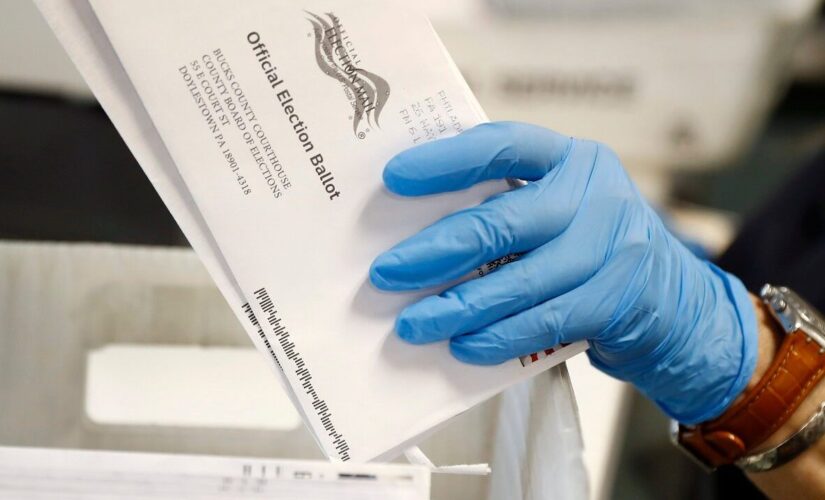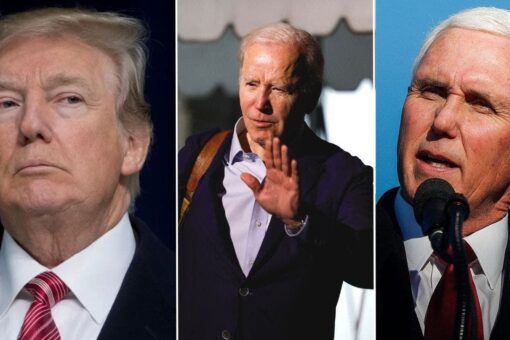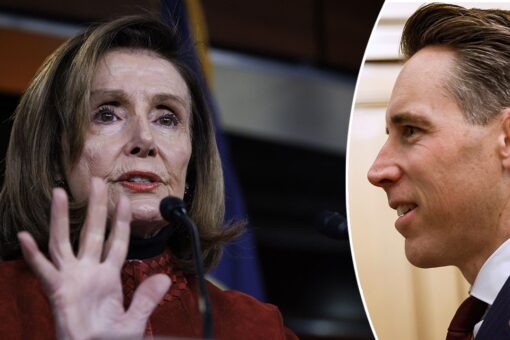NEWYou can now listen to Fox News articles!
Instead of voting for a single candidate, voters in Alaska Tuesday are ranking their favorite candidates on their ballots in an election process called ranked choice voting that is becoming more popular in the U.S.
Fox News Digital spoke with American Enterprise Institute senior fellow Kevin Kosar, who studies politics, Congress and election reform, to better understand the process, how it has been implemented in America, and its impact on this year’s midterm election primaries.
What is ranked choice voting?
“Ranked choice voting differs from the voting that most Americans are used to experiencing, where you walk into a voting booth or pick up your mail-in ballot and you pick one candidate for one position among a variety of individuals,” Kosar told Fox News Digital in an interview.
TOP TRUMP TARGETS CHENEY, MURKOWSKI, FACE VOTERS IN TUESDAY’S PRIMARIES IN WYOMING, ALASKA
A worker processes mail-in ballots at the Bucks County Board of Elections office prior to the primary election in Doylestown, Pennsylvania, May 27, 2020.
(AP Photo/Matt Slocum, File)
“With ranked choice voting, you get to rank the candidates presented before you. So the candidate you like the most, you rank number one, the candidate you like the least you put in the last place, and then everybody else falls in between. And that’s ranked choice voting from the voters experience,” Kosar said.
Ranked choice vote counting operates normally on the first round, where only voters’ first choice is counted. But if no candidate reaches 50% of the vote, then election officials will begin counting the second choice candidates.
The process involves eliminating the candidate with the least number of first-choice votes. From those ballots, election officials tally the second-choice candidate, adding to the total tally of the other candidates.
“And they keep doing that until somebody hits that 50% threshold,” Kosar said.
How will ranked choice voting affect Alaska’s elections?
There is potential that after the first round, the person with more votes than other candidates – but not the majority – might lose the lead in the second round. That very situation might happen in Alaska Tuesday evening, Kosar speculated.
GOP Sen. Lisa Murkowski takes a picture with supporters in Talkeetna, Alaska, on Aug. 13, 2022.
(Lisa Murkowski re-election campaign)
“For one of the open positions, you have two Republicans running and one Democrat. Now, it’s fairly likely that Democrats are mostly going to vote for that Democrat, whereas Republicans, conservatives and libertarians will split their votes on the two GOP candidates. So the first round, the Democrat may actually lead, but it’s not going to get a full 50%. Come second round, the Republicans are likely to surge.”
Alaska has an open primary, meaning every voter sees all the candidates of every party, not just the Republican or Democratic candidates seeking their party’s nomination. Unlike party-specific primary ballots, which have only one party’s candidates, every candidate can be ranked.
ALASKA ORGANIZATIONS GET CREATIVE TO HELP WITH RANKED VOTING
The question will be whether the ranked choice voting method increases turnout. Kosar believes it could, since more candidates typically run in ranked choice elections, seeing the potential of having a greater shot despite perhaps not being a party establishment favorite.
What are the benefits of ranked choice voting?
“You have fewer and fewer Americans affiliating with either of the two major political parties. Around half of Americans are declared independents. And I can tell you, in my home state of Ohio, more than three-quarters of Americans, Ohioans that is, are independents. So for voters, not forcing them to join a party that they don’t want to join is part of the draw.”
Another draw is to “de-polarize” primary elections.
SUPREME COURT SHOOTS DOWN GOP ATTEMPT TO STOP RANKED-CHOICE VOTING IN MAINE
“The Republicans running their own primary and the Democrats running their own primary candidates have a tendency to run hard left and hard right to win their primaries. Then voters who tend not to be hard left or hard right are faced with picking among the lesser of two evils. The idea with the final four system and using ranked choice voting is that you’re going to end up with candidates who can speak to both sides of the political spectrum,” Kosar said.
In New York City, the Democratic primary for mayor in 2021 was held with ranked choice voting, and the system helped elect Mayor Eric Adams, who was a more moderate candidate, according to Kosar.
“New York City has a long history of picking mayors who are liberal, even when they’ve had, you know, Republicans in recent years, like Mike Bloomberg, he was clearly on the left. This election, you would have expected them once again to get a liberal. The Democratic Party is very powerful, the liberal money interests are very powerful there, yet they ended up with a mayor who’s moderate and tough on crime. And for many of us who saw that election, that looked like proof of concept,” Kosar siad.
“The one candidate who had real law enforcement experience and who ran on being tough on crime ended up winning not in the first round – took a few rounds before he had the votes – but he was chosen.”
What are the criticisms of ranked choice voting?
One downside is that ranked voting can drag an election out for days or weeks if election officials have to tally multiple rounds. In New York last year, the Democratic primary closed June 22, but it took until July 6 for the winner to be announced.
But an incident in Maine after it approved ranked choice voting angered the GOP after former Republican Rep. Bruce Poliquin was narrowly defeated in the 2018 midterms through ranked-choice voting, even though he won the most votes in the first round of counting.
CLICK HERE TO GET THE FOX NEWS APP
“Probably the most common criticism is that, this is going to be too hard, voters are going to get confused,” Kosar said. “There’s an assumption that the average American is a dope and can’t figure this out. And I like to respond that, you know, for one, Australia has used it for a very long time and I don’t think Australians are inherently smarter than Americans.”
But ranking choices is something Americans do on a regular basis. “You go and order a beer. Sometimes that beer is going to be out, you have a backup in mind. So this ranking is not something that we don’t do as human beings. We do it every day and it’s easy. Americans can handle it.”




